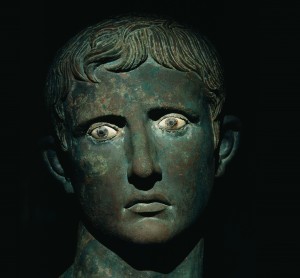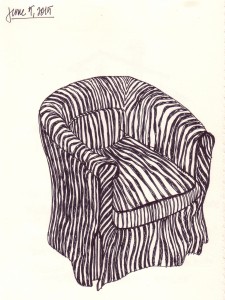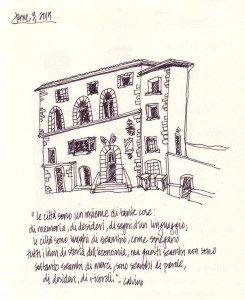How the Mind Creates Reality
 Our KM Book Group is now reading the chapter on “Formations and Consciousness,” in Joseph Goldstein’s Mindfulness book.
Our KM Book Group is now reading the chapter on “Formations and Consciousness,” in Joseph Goldstein’s Mindfulness book.
He writes: The great challenge here is both to understand consciousness as a magical display and at the same time to live a life of wisdom and compassion, engaged with the world. An intriguing description of how these two levels inform one another, of how the mind creates the reality we experience, was written by Victor S. Johnston in his book, Why We Feel: The Science of Human Emotions:
“Consider a world without consciousness. The darkness is a bubbling cauldron of energy and vibrating matter, locked in the dance of thermal agitation. Through shared electrons, or the strange attraction of unlike charges, quivering molecules, not free to roam, absorb and emit their characteristic quanta packages of energy with the surrounding fog. Free gas molecules, almost oblivious to gravity but buffeted in all directions by their neighbors, form swirling turbulent flows or march in zones of compression and expansion…
“A massive solar flux and cosmic radiation from events long past crisscross space with their radiant energy and silently mix with the thermal glow of living creatures…
“[W]ithin the warmth of their sticky protein bodies, the dim glow of consciousness is emerging to impose its own brand of organization on this turbulent mix of energy/matter. The active filter of consciousness illuminates the darkness, discards all irrelevant radiation, and in a grand transmutation converts and amplifies the relevant. Dead molecules erupt into flavors of bitterness or sweetness, electromagnetic frequencies burst with color, hapless air pressure waves become the laughter of children, and the impact of a passing molecule fills a conscious mind with the aroma of roses on a warm summer afternoon.”
Thinking About Not Thinking
 I think I’m going to use a reading from Gil Fronsdal for the Sunday Sangha discussion I’ll be leading this coming weekend. It’s from the section on “Mindfulness of Thoughts,” in his excellent little book, The Issue at Hand: Essays on Buddhist Mindfulness Practice, which is available as a free pdf here.
I think I’m going to use a reading from Gil Fronsdal for the Sunday Sangha discussion I’ll be leading this coming weekend. It’s from the section on “Mindfulness of Thoughts,” in his excellent little book, The Issue at Hand: Essays on Buddhist Mindfulness Practice, which is available as a free pdf here.
“Sometimes people think the point of mediation is to stop thinking–to have a silent mind. This does happen occasionally, but it is not necessarily the point of meditation. Thoughts are an important part of life, and mindfulness practice is not supposed to be a struggle against them.
“We can benefit more by being friends with our thoughts than by regarding them as unfortunate distractions. In mindfulness, we are not stopping thoughts as much as overcoming any preoccupation we have with them.
“However, mindfulness is not thinking about things, either. It is a non-discursive observation of our life in all its aspects. In those moments when thinking predominated, mindfulness is the clear and silent awareness that we are thinking.
“A piece of advice I found helpful and relaxing was when someone said, ‘For the purpose of meditation, nothing is particularly worth thinking about.’
“Thoughts can come and go as they wish, and the meditator does not need to become involved with them. We are not interested in engaging in the content of our thoughts. Mindfulness of thinking is simply recognizing that we are thinking.”
Today I/Me/My….
 Today I am getting ready for the arrival of my friend, Jill, who is coming from Singapore, and for the party I am giving in her honor — a reunion of the book club I used to host, of which Jill was a member.
Today I am getting ready for the arrival of my friend, Jill, who is coming from Singapore, and for the party I am giving in her honor — a reunion of the book club I used to host, of which Jill was a member.
We’ll be party-ing and reunion-ing, but also discussing a book I selected, which I’ve found inspiring (but also distressing): The Folded Clock, by Heidi Julavits. (I posted previously about it here.)
The book has 92 short chapters, each headed by a date (but not listed in chronological order), and each beginning with “Today…”
For example:
June 21. Today I wondered What is the worth of a day?
March 3. Today my friend asked me, “Am I crazy?”
July 29. Today I was reading The Men’s Club, by a California writer, now dead, named Leonard Michaels.
July 18. Today, or rather tonight, my husband and I will be watching “The Men Tell All.”
August 2. Today I was stung by a wasp.
Of course, there’s much more to each chapter/day than just that one sentence. Each “today” is an opening to what turns out to be quite compelling little narrative essays — mental ramblings, beautifully crafted — which overlap, reflect and sometimes reshape each other…and which we, as readers, hold together in our minds as the “I” of the one who is doing the telling.
Which is how we do it, too, for ourselves. We create a sense of our “self” by telling the “story” of our “self” — to our “self.” (That’s what that near-constant monologue that’s going on in our heads is doing.)
Ask yourself this: Who is saying all that stuff you find yourself thinking? Who’s listening to it? And who’s believing it?
It’s Better to Know
 This from Mindfulness: A Practical Guide to Awakening, by Joseph Goldstein, which our KM Book Group will be discussing tonight:
This from Mindfulness: A Practical Guide to Awakening, by Joseph Goldstein, which our KM Book Group will be discussing tonight:
“Without an understanding of what is skillful and what is unskillful, we end up doing a lot of things that either don’t bring their promised results or actually bring harm to others and ourselves. This, in turn, leads to doubt and confusion about what we’re doing in our practice and our lives.
“For this reason, there is the counterintuitive teaching that it is better to do an unskillful act knowing that it is unskillful than to do it without that knowledge. If we go ahead and do that act, even as we know that it’s unskillful, there are still the seeds of wisdom that can lead to future restraint.” (p. 168)
Should be a lively discussion!
It Works Even When It Doesn’t
 For today, I’d like to share a bit of practice reassurance by Gil Fronsdal, from his sweet little collection of essays titled, The Issue at Hand. (Download a free copy here.)
For today, I’d like to share a bit of practice reassurance by Gil Fronsdal, from his sweet little collection of essays titled, The Issue at Hand. (Download a free copy here.)
“In practicing mindfulness, it can be helpful to remember that the practice works even when it doesn’t seem to work. Perhaps this is explained best through an analogy.
“Consider a mountain stream where the water is quite clear, and seems placid and still. But if you place a stick into the water, a small wake around the stick shows that in fact the water is flowing. The stick becomes a reference point that helps us notice the movement of the water.
“Similarly, the practice of mindfulness is a reference point for noticing aspects of our lives that we may have missed. This is especially true for mindfulness of breathing. In trying to stay present for the breath, you may become aware of the concerns and momentum of the mind that pull the attention away from the breath. If you can remain with the breath, then obviously mindfulness of breathing is working. However, if your attempt to stay with the breath results in increased awareness of what pulls you way from the breath, then the practice is also working.
“Without the reference of mindfulness practice, it is quite easy to remain unaware of the preoccupations, tensions, and momentum operating in your life. For example, if you are busily doing many things, the concern for getting things done can blind you to the tension building in the body and mind. Only stopping to be mindful may you become aware of the tensions and feelings that are present….
“Remember, if we learn from what is going on, regardless of what is happening, the practice is working, even when it seems not to be working, when we aren’t able to stay with the breath….
“And when we ARE settled on the breath, then the heart becomes clear, peaceful, and still like a mountain pool. Then we can see all the way to the bottom.”
We All Want to Be Happy
 I’m thinking about what I want to talk about at the next Sunday Sangha. There have been a lot of new people coming — many brand new to meditation — so I thought I might start with this passage from Mindfulness in Plain English, by Bhante Gunaratana:
I’m thinking about what I want to talk about at the next Sunday Sangha. There have been a lot of new people coming — many brand new to meditation — so I thought I might start with this passage from Mindfulness in Plain English, by Bhante Gunaratana:
“Happiness and peace are really the prime issues in human existence…
“So what is this happiness? For most of us, the idea of perfect happiness would be to have everything we wanted and be in control of everything, playing Caesar, making the whole world dance a jig according to our every whim. Once again, it does not work that way.
“Take a look at the people in history who have actually held this type of power. They were not happy people. Certainly, they were not at peace with themselves. Why not? Because they were driven to control the world totally and absolutely and they could not…. These powerful people could not control the stars. They still got sick. They still had to die.
“You can’t ever get everything you want. It is impossible. Luckily, there is another option. You can learn to control your mind, to step outside of the endless cycle of desire and aversion.”
***
And how do you do that?
By meditating.
And how does that work?
Stop in at Sunday Sangha and find out!
(“Sunday Sangha” is a Mindfulness Meditation Sitting Group that meets every Sunday, 11:00 am to 12:30 pm, at 7700 Clayton Road, Suite 319.)
Reading about Wanting
 Here is a drawing I made of the chair in my room in Castiglion Fiorentino, where I sat to read the book I’d brought for literary inspiration: The Folded Clock, by Heidi Julavits. I thought I’d be inspired because it got rave reviews in the New York Times, and because the structure of the book is both mundane (it’s a diary) and yet it’s not (there’s no discernible order). Each entry starts with a date, which seems to have no chronological connection to the entry before, and with a sentence that begins, “Today…”
Here is a drawing I made of the chair in my room in Castiglion Fiorentino, where I sat to read the book I’d brought for literary inspiration: The Folded Clock, by Heidi Julavits. I thought I’d be inspired because it got rave reviews in the New York Times, and because the structure of the book is both mundane (it’s a diary) and yet it’s not (there’s no discernible order). Each entry starts with a date, which seems to have no chronological connection to the entry before, and with a sentence that begins, “Today…”
For example:
May 5. Today I met for lunch a famous German artist, the one who violates the homes of others with her personal possessions.
August 30: Today we climbed Blue Hill.
June 8. Today I flew home from Italy after living for a month with a ghost.
So you can see, this is no ordinary diary.
From a literary point of view, it was very inspiring. From a personal point of view, it was mostly disheartening.
On August 16, she writes about wanting. The entry begins: Today I browsed for skirt suits online. She ends with a beautifully written riff on wanting, which I think captures something of the delusion that keeps her (and others) forever looking for SOMETHING, always anxious, unsettled, and unhappy:
“I recalled being a kid and my mom taking me to a plant nursery called Skillins. I hated Skillins. As a child I was gifted at finding objects to desire. To take me to basically any store was to court my begging for items I had no business wanting. It was desire for the sake of desire. The plant nursery, however, confounded my meta-desire mechanism. I tried and tried, but I could never find a single thing to desire at Skillins, not even in the room with the ceramic frog planters. I didn’t want anything, and because I didn’t want anything, Skillins made me anxious. In Skillins I experienced what it was to desperately want to want something, and to find nothing to want. Even as a kid, this struck me as the worst possible way to feel. I sometimes think this is why I became a writer. Here was a way to regularly exercise my desire. I could desire to do this thing that no one does perfectly, and by doing it and doing it I could learn how to desire more, and better. Here was an activity that would always leave me wanting. When I want something–that to me is not youth exactly, but the opposite of death. That to me is a way to always feel like I am nowhere near the end.”
This Makes Me Happy
 This is a photo of the craziest coffee maker I’ve ever seen…which appeared one day in the window of one of the shops in Castiglion Fiorentino. I love this little shop, although I never went in — partly because it seemed to be closed most of the time, but also because what need did I have to go in? I was already happy just looking at the window!
This is a photo of the craziest coffee maker I’ve ever seen…which appeared one day in the window of one of the shops in Castiglion Fiorentino. I love this little shop, although I never went in — partly because it seemed to be closed most of the time, but also because what need did I have to go in? I was already happy just looking at the window!
Here’s a quote that also make me happy, from The Italians, by Luigi Barzini:
“The Italians know that everything in their country is..imbued with their spirit. They know that there is no need, really, to distinguish or to choose between the smile on the face of a cameriere (waiter) or Donatello’s San Giorgio..They are all works of art, the Great Art of Being Happy and of making other people happy, an art which embraces and inspires all others in Italy, the only art worth learning, but which can never be really mastered, the art of inhabiting the earth.”
Visible and Invisible
 One of the first things I did after arriving in the sweet little “city” of Castiglion Fiorentino was to buy an Italian copy of Invisible Cities (Le Citta’ Invisibili), by Italo Calvino, which, as I’ve said many times, is my go-to book when it comes to travel.
One of the first things I did after arriving in the sweet little “city” of Castiglion Fiorentino was to buy an Italian copy of Invisible Cities (Le Citta’ Invisibili), by Italo Calvino, which, as I’ve said many times, is my go-to book when it comes to travel.
And one of the second things I did was to draw what I saw.
Here’s my drawing of the Municipal Building in the main piazza.
And here’s my transition of the Calvino quote at the bottom of the page: “Cities are a combination of many things: memory, desire, language; cities are the place of exchange, as is explained in all the books on the history of economy, but these exchanges are not only the exchange of commerce, these exchanges are also of words, desires and remember-ings.”
(click to enlarge)
Facendo Niente
As I mentioned here and here, I’ll be in Italy for the next 3 weeks (staying at Le Santucce in Castiglion Florentino), doing some writing, speaking some Italian, spending some time doing nothing with friends. I get back late on June 22, but probably won’t be ready to blog again for a couple of days, so check back again around June 26.
I leave tomorrow. So for today, I’m doing my pre-travel ritual, which includes browsing through my all-time favorite travel guide, Invisible Cities, by Italo Calvino. I offer you this selection:
Cities & Eyes 2
It is the mood of the beholder which gives the city of Zemrude its form. If you go by whistling, your nose a-tilt behind the whistle, you will know it from below: window sills, flapping curtains, fountains. If you walk along hanging your head, your nails dug into the palms of your hands, your gaze will be held on the ground, in the gutters, the manhole covers, the fish scales, wastepaper. You cannot say that one aspect of the city is truer than the other, but you hear of the upper Zemrude chiefly from those who remember it, as they sink into the lower Zemrude, following every day the same stretches of street and finding again each morning the ill-humor of the day before, encrusted at the foot of the walls. For everyone, sooner or later, the day comes when we bring our gaze down along the drainpipes and we can no longer detach it from the cobblestones. The reverse is not impossible, but it is more rare: and so we continue walking through Zemrude’s streets with eyes now digging into the cellars, the foundations, the wells.

